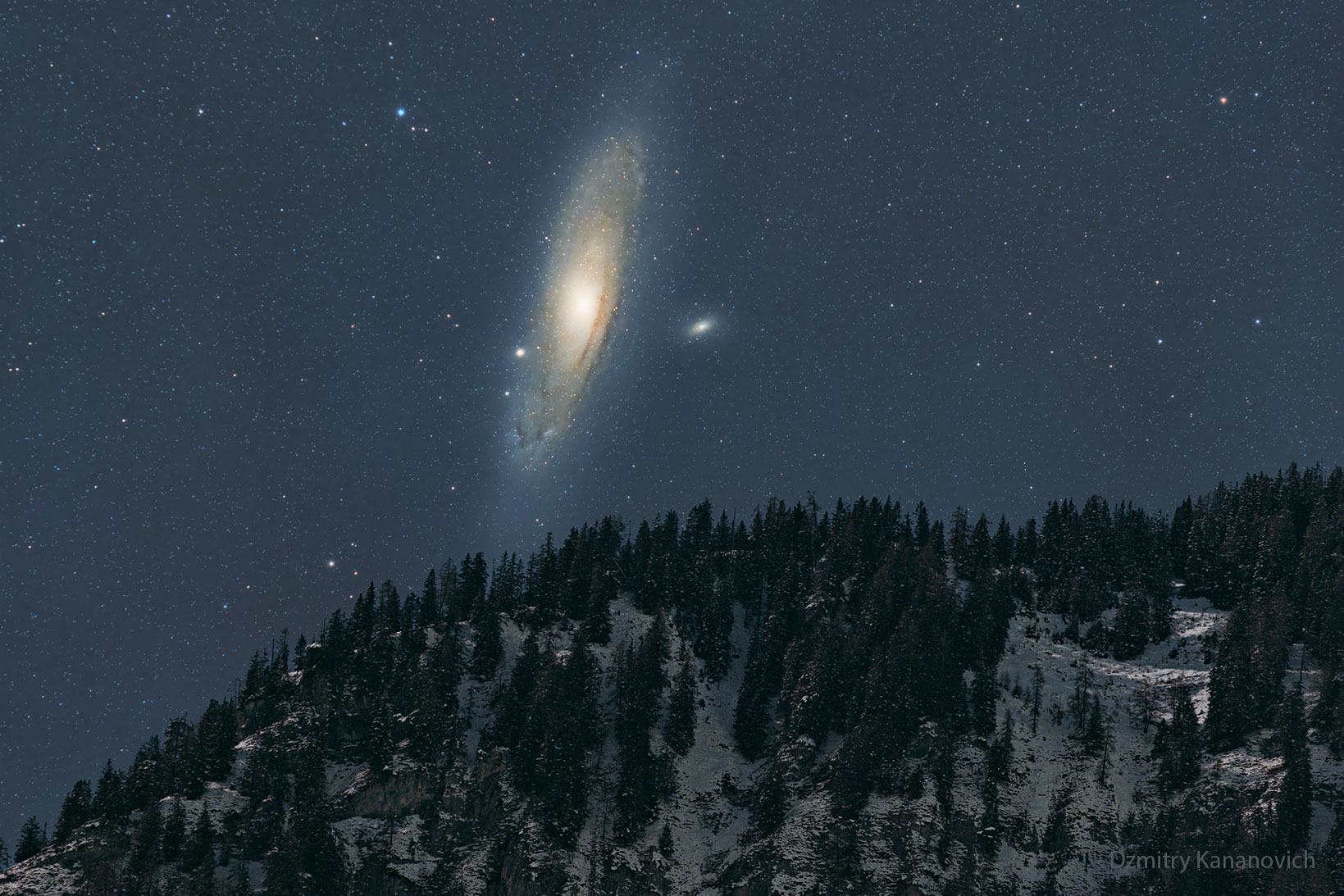Blog
Cataloged as M1, the Crab Nebula is the first on Charles Messier’s famous list of things which are not comets. In fact, the Crab Nebula is now known to be a supernova remnant, an expanding cloud of debris from the death explosion of a massive star. The violent birth of the Crab was witnessed by astronomers in the year 1054. Roughly 10 light-years across, the nebula is still expanding at a rate of about 1,500 kilometers per second. You can see the expansion by comparing these sharp images from the Hubble Space Telescope and James Webb Space Telescope. The Crab’s dynamic, fragmented filaments were captured in visible light by Hubble in 2005 and Webb in infrared light in 2023. This cosmic crustacean lies about 6,500 light-years away in the constellation Taurus.

Susie Ibarra (born Anaheim, November 15, 1970) is a contemporary composer and percussionist who has worked and recorded with jazz, classical, world, and indigenous musicians. One of SPIN’s “100 Greatest Drummers of Alternative Music,” she is known for her work as a performer in avant-garde, jazz, world, and new music. As a composer, Ibarra incorporates diverse styles and the influences of Philippine Kulintang, jazz, classical, poetry, musical theater, opera, and electronic music. Ibarra remains active as a composer, performer, educator, and documentary filmmaker in the U.S., Philippines, and internationally. She is interested and involved in works that blend folkloric and indigenous tradition with avant-garde. In 2004, Ibarra began field recording indigenous Philippine music, and in 2009 she co-founded Song of the Bird King, an organization focusing on the preservation of Indigenous music and ecology.
more...Kevin Tyrone Eubanks (born November 15, 1957) is an American jazz and fusion guitarist and composer. He was the leader of The Tonight Show Band with host Jay Leno from 1995 to 2010. He also led the Primetime Band on the short-lived The Jay Leno Show.
Eubanks was born into a musical family. His older brother, Robin Eubanks, is a trombonist, and his younger brother Duane Eubanks is a trumpeter. As an elementary school student, Eubanks was trained in violin, trumpet, and piano at the Settlement Music School (in Philadelphia). He later attended Berklee College of Music (in Boston, Massachusetts). Eubanks is a pescetarian and maintains a diet of fresh fruits, vegetables, grains, egg whites, and fish.
more...Jerome Richardson (November 15, 1920 – June 23, 2000) was an American jazz musician and woodwind player. He played the soprano saxophone, alto saxophone, tenor saxophone, baritone saxophone, bass saxophone, soprano clarinet, alto clarinet, bass clarinet, piccolo, western concert flute, soprano flute, alto flute, tenor flute, and bass flute. He played with Charles Mingus, Lionel Hampton, Billy Eckstine, The Thad Jones/Mel Lewis Orchestra, Kenny Burrell, and later with Earl Hines‘ small band.
Richardson was born in Oakland, California, and died in Englewood, New Jersey, of heart failure at the age of 79.
more...This luminous tangle of stars and dust is the barred spiral galaxy NGC 1385, that lies about 30 million light-years from Earth. The same galaxy was the subject of another Hubble Picture of the Week, but the two images are notably different. This more recent image has far more pinkish-red and umber shades, whereas the former image was dominated by cool blues. This chromatic variation is not just a creative choice, but also a technical one, made in order to represent the different number and type of filters used to collect the data that were used to make the respective images.
It is understandable to be a bit confused as to how the same galaxy, imaged twice by the same telescope, could be represented so differently in two different images. The reason is that — like all powerful telescopes used by professional astronomers for scientific research — Hubble is equipped with a range of filters. These highly specialised components have little similarity to filters used on social media: those software-powered filters are added after the image has been taken, and cause information to be lost from the image as certain colours are exaggerated or reduced for aesthetic effect. In contrast, telescope filters are pieces of physical hardware that only allow very specific wavelengths of light to enter the telescope as the data are being collected. This does cause light to be lost, but means that astronomers can probe extremely specific parts of the electromagnetic spectrum. This is very useful for a number of reasons; for example, physical processes within certain elements emit light at very specific wavelengths, and filters can be optimised to these wavelengths. 
more...
Aaron Copland November 14, 1900 – December 2, 1990) was an American composer, composition teacher, writer, and later a conductor of his own and other American music. Copland was referred to by his peers and critics as the “Dean of American Composers”. The open, slowly changing harmonies in much of his music are typical of what many people consider to be the sound of American music, evoking the vast American landscape and pioneer spirit. He is best known for the works he wrote in the 1930s and 1940s in a deliberately accessible style often referred to as “populist” and which the composer labeled his “vernacular” style. Works in this vein include the ballets Appalachian Spring, Billy the Kidand Rodeo, his Fanfare for the Common Man and Third Symphony. In addition to his ballets and orchestral works, he produced music in many other genres, including chamber music, vocal works, opera and film scores.
more...
Stanley Dural Jr. (November 14, 1947 – September 24, 2016), Lafayette, LA better known by his stage name Buckwheat Zydeco, was an American accordionistand zydeco musician. He was one of the few zydeco artists to achieve mainstream success. His music group was formally billed as Buckwheat Zydeco and Ils Sont Partis Band (“Ils Sont Partis” being French for “They have left”), but they often performed as merely Buckwheat Zydeco.
more...
more...Ellis Louis Marsalis Jr. (November 14, 1934 – April 1, 2020) NOLA, LAwas an American jazz pianist and educator. Active since the late 1940s, Marsalis came to greater attention in the 1980s and 1990s as the patriarch of the musical Marsalis family, when sons Branford and Wynton became popular jazz musicians.
more...Have you ever seen the Andromeda galaxy? Although M31 appears as a faint and fuzzy blob to the unaided eye, the light you see will be over two million years old, making it likely the oldest light you ever will see directly. The featured image captured Andromeda just before it set behind the Swiss Alpsearly last year. As cool as it may be to see this neighboring galaxy to our Milky Way with your own eyes, long duration camera exposures can pick up many faint and breathtaking details. The image is composite of foreground and background images taken consecutively with the same camera and from the same location. Recent data indicate that our Milky WayGalaxy will collide and coalesce with Andromeda galaxy in a few billion years.
John Paul Hammond (born November 13, 1942 in New York City) is an American singer and musician. The son of record producer John H. Hammond, he is sometimes referred to as John Hammond Jr.
more...Idris Muhammad was born on November 13,1939-July 29th 2014
and began playing the drums at age 8 in his native New Orleans. By the time he was 16, he was performing in jazz bands. Muhammad became known as one of the most innovative drummers in soul music of the 1960’s, performing with singers Sam Cooke, Jerry Butler, and The Impressions. He played for the popular musical Hair while performing with the house band for the Prestige Label in the early 1970’s. For the rest of that decade, he accompanied popular singer Roberta Flack, led his own band, and worked with Johnny Griffin and Pharaoh Sanders. An excellent drummer who has appeared in many types of settings, Idris Muhammad became a professional when he was 16. He played primarily soul and R&B during 1962-1964 and then spent 1965-1967 as a member of Lou Donaldson’s band. He was the house drummer at Prestige Records (1970-1972), appearing on many albums as a sideman. Of his later jazz associations, Muhammad played with Johnny Griffin (1978-1979), Pharoah Sanders in the 1980s, George Coleman, and the Paris Reunion Band (1986-1988). He has recorded everything from post-bop to dance music as a leader for such labels as Prestige, Kudu, Fantasy, Theresa, and Lipstick. Muhammad’s 1993 recording My Turn includes saxophonist Grover Washington, Jr. and trumpetor Randy Brecker, both of whom are also featured performers in this year’s 25th Annual University of Pittsburgh Jazz Seminar and Concert.
more...Hampton Barnett Hawes Jr.(November 13, 1928 – May 22, 1977) LA, CA was an American jazz pianist. He was the author of the memoir Raise Up Off Me, which won the Deems-Taylor Award for music writing in 1975.
https://youtu.be/vGjVondfCUk?si=wB86BMmcEhggDd-J
more...More Posts
- Ray Mantilla Day
- Cal Green Day
- World Music with ESTRELLA MORENTE
- Daily Roots with Sizzla
- The Cosmos with NGC 5426/27
- Eric Reed Day
- Lalo Schifrin
- Skip James Day
- World Music with Alekos K. Vretos
- Daily Roots with Ijahman Levy
- The Cosmos with M16
- Eric Dolphy Day
- Lazy Lester Day
- World Music with Obo Addy
- Daily Roots with Bob Marley
- The Cosmos with Fleming 1
- Ernest Ranglin Day
- Billy Drummond Day
- World Music with Lela Tataraidze
- Daily Roots with the Skatalites
